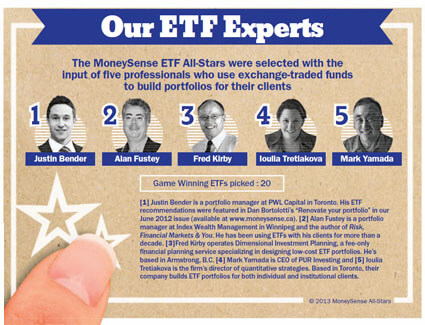ETF All-Stars 2013
Investors are flocking to exchange-traded funds, but it's easy to be baffled by the hundreds of choices. We spotlight the BEST in our first annual survey of the country's top ETFs!
Advertisement
Investors are flocking to exchange-traded funds, but it's easy to be baffled by the hundreds of choices. We spotlight the BEST in our first annual survey of the country's top ETFs!
 To see the starting lineup in the Canadian, U.S. and Global Equities categories as well as the leading bond and speciality ETFs, pick up a copy of the February/March issue of MoneySense on newsstands now through March 31st or buy the digital download today.
To see the starting lineup in the Canadian, U.S. and Global Equities categories as well as the leading bond and speciality ETFs, pick up a copy of the February/March issue of MoneySense on newsstands now through March 31st or buy the digital download today.

Share this article Share on Facebook Share on Twitter Share on Linkedin Share on Reddit Share on Email